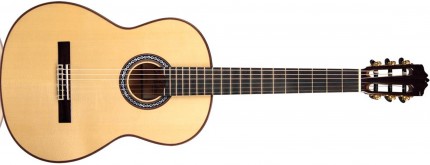March 5th, 2011 by Andres Gallo

$800 -$1000
Design
After lots of research on the internet in search for a high gain lower wattage amplifier, I learned of a few amplifier brands with a great reputation. One of these brand is Phaez amplifiers, who makes various amplifier models to which he offers lots of customization. Reading through various comparisons and reviews I saw nothing but raving reviews, and so thought I should hear it myself.
One of the coolest aspects of the Phaez brand is that you can customize various things about the amplifier. You can get the amps with just about any choice of tubes, furthermore, you can even request some features to make your amp more unique; I had a unique boost installed in my amplifier. Unlike the usual boost in most amps, I asked for my amp’s boost to take place after the preamp stage to keep my tone more consistent, and simply louder.
As mentioned you have the choice to design many aspects of your amplifier, and you can even ask Randy for suggestions on features that would better suit your playing style. The unit I got for example is called Blackdaisy for its Fender Blackface like cleans, and its Daisycutter high gain channel. These are two things I really wanted in my amplifier, and two which I will cover in more detail as I cover the amplifier’s sound quality.
Overall the design is very custom which it can’t be wrong, but one thing that definitely needs improvement in my opinion is the aesthetic of it. The casing looks awesome with the clear front covering, however it is not a look that defines the amp or which shows how good the amp sounds. The look is in other words somewhat generic with the exception of the plexi front, yet I am sure most people looking for a custom amp are really looking for the sound quality rather than how it looks.
Sound
With this kt77 35watt unit I got a really sonorous clean channel. It has that Fender Blackface quality to it, but its a fair bit more chimey making it great for rock music and such. While I got this amp for its high gain channel, I ended up liking its clean channel a lot more. I could see myself using this along with the Evans AH200 when recording clean tracks.
Just as good as the clean channel is its high gain channel, which is a great 70s to 80s high gain sound with lots of body. In terms of body it sounds huge…bigger sounding than most high gain amplifiers, however it does not have the modern airier tone of some of the other high gain amps that I have grown to love. Triads and power chords come through so mean and strong that it keeps you playing heavy riffs that have body unheard of in other amplifiers. All in all the sound is great, with my only gripe being the versatility of the high gain channel. Its a really good sounding high gain channel, but its not as versatile as I’d like.
Reliability
The plexiglass can make it seem like the amp is more exposed than it should be, however the amp feels very solid. The amp feels strong, and reliable to play through years of shows
Conclusion
The clean is beautiful as well as its high gain sound. Just as it is with any amplifier however, its sound is not for everybody. The high gain channel’s vintage grit while not exactly my sound, is one I know a lot of people love.
Phaez Amps Website






